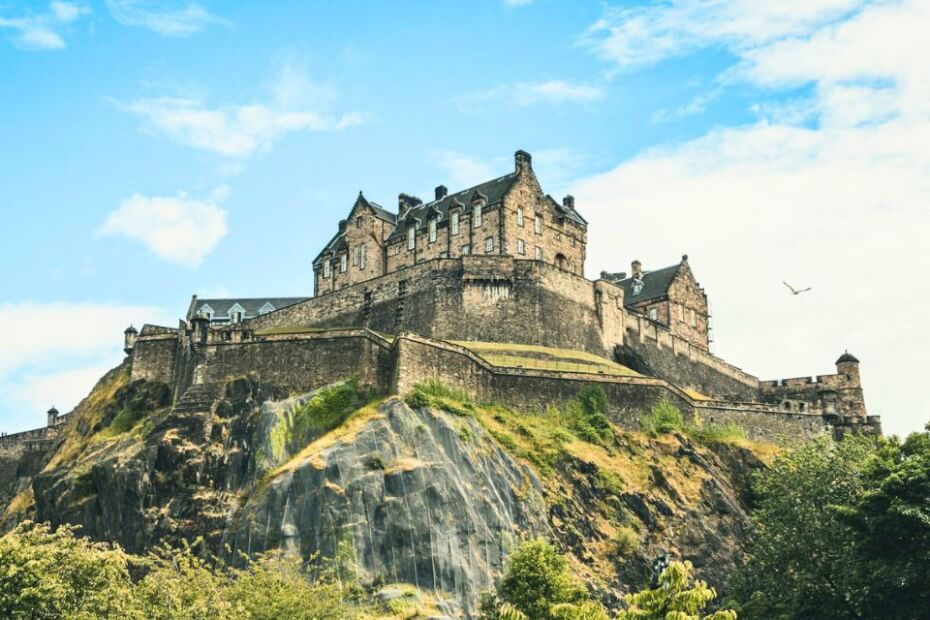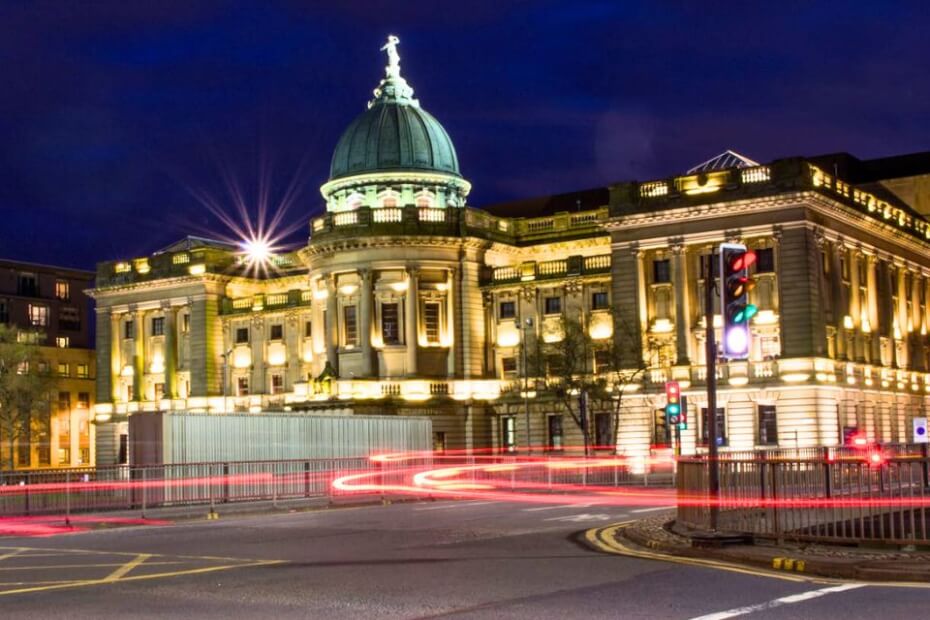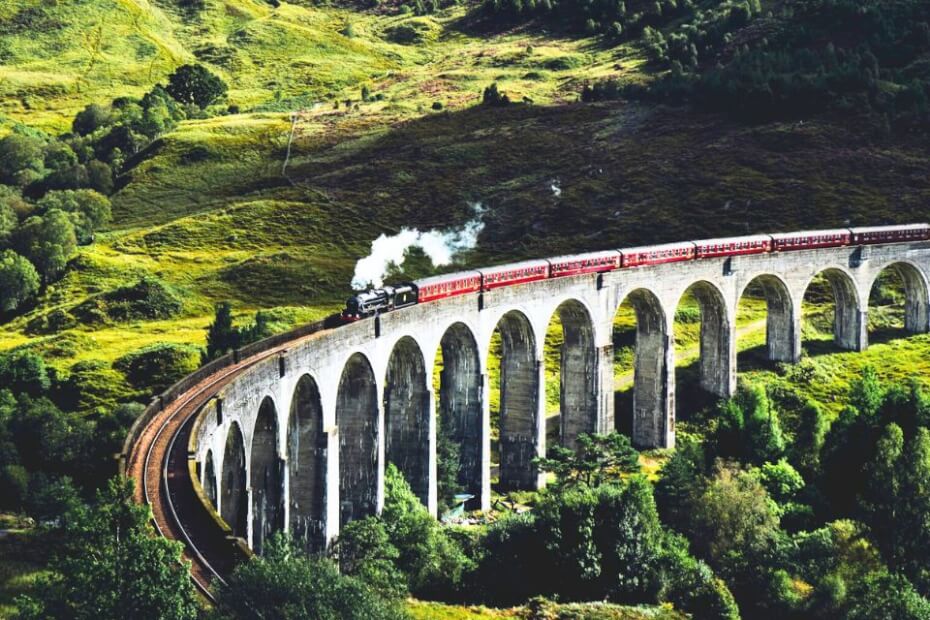
Scotland, the northern jewel of the United Kingdom (UK), is a land of ancient castles, sweeping landscapes, and vibrant cities that blend history with modernity.
It offers bustling urban centers and serene Highlands with endless opportunities for adventure and discovery.
In 2025, travelers to Scotland from visa-exempt countries must have an Electronic Travel Authorization (ETA). They must apply for the pre-travel permit in advance, whether planning a quick break or a short stay of less than six months.
This article offers a walkthrough of Scotland’s sights, from cities to iconic spots and beyond, which promise memories that will last a lifetime.
Edinburgh: Scotland’s Historic Capital
Edinburgh is the heart of Scotland’s history and culture. It is a must-visit for its medieval charm and modern attractions.
Overlooked by the imposing Edinburgh Castle, the city offers a mix of ancient streets and lively festivals, making it one of Europe’s most visited destinations.
Visitors must not miss the following top spots in Edinburgh:
- The Royal Mile: A bustling street connecting the castle to Holyrood Palace, lined with charming shops, restaurants, and historic sites.
- Arthur’s Seat: An extinct volcano perfect for hiking, offering panoramic city views.
- National Museum of Scotland: Home to treasures ranging from prehistoric artifacts to cutting-edge science exhibitions.
- Edinburgh Festival Fringe: The world’s largest arts festival, held every August, transforming the city into a hub of creativity.
For a magical experience, visit in December to explore the festive Christmas markets or ring in the New Year with the famous Hogmanay celebrations.
Glasgow: A Cultural Powerhouse

Scotland’s largest city is renowned for its music, art, and thriving nightlife. Situated along the River Clyde, Glasgow has evolved from an industrial hub to a vibrant cultural center, attracting millions of visitors annually.
Highlights in Glasgow for travelers include:
- Kelvingrove Art Gallery and Museum: A treasure trove of art, history, and nature exhibits in a stunning building.
- Riverside Museum: A family-friendly attraction showcasing transportation history, from vintage cars to locomotives.
- George Square: The city’s bustling heart is surrounded by historic architecture and is home to lively events.
- Merchant City District: A trendy area perfect for boutique shopping, dining, and nightlife.
Music lovers will appreciate Glasgow’s designation as a UNESCO City of Music. Live performances are held at iconic venues like the Barrowland Ballroom and King Tut’s Wah Wah Hut.
Aberdeen: The Granite City
Known for its gray stone buildings that shimmer in the sun, Aberdeen combines historic charm with modern coastal appeal. Located on Scotland’s northeast coast, the city has a rich maritime history and is often called the “Oil Capital of Europe.”
Top attractions in Aberdeen are:
- Maritime Museum: A fascinating dive into Aberdeen’s seafaring heritage and its modern ties to the oil industry.
- St. Machar’s Cathedral: A striking example of medieval architecture dating back to the 12th century.
- Aberdeen Beach: A beautiful stretch of coastline, perfect for long walks or spotting dolphins at the harbor.
- Brig O’Balgownie: This historic bridge, constructed in the late 13th century, offers a peaceful setting by the River Don.
Nature enthusiasts will especially enjoy Aberdeen, as the city is also the gateway to some of Scotland’s most scenic coastal trails and wildlife-rich reserves.
Dundee: A City of Innovation
Once known for its jute production, Dundee has transformed into a hub for culture and technology. Nestled on the banks of the River Tay, the city now boasts attractions that blend history with cutting-edge design.
Key stops in Dundee are:
- V&A Dundee: Scotland’s first design museum, housed in an architectural marvel on the waterfront.
- Discovery Point: Step aboard the RRS Discovery, the ship that took explorers to Antarctica.
- Verdant Works: A restored jute mill that tells the story of Dundee’s industrial past.
- The Law: This extinct volcano offers sweeping views of the city and surrounding countryside.
Dundee’s vibrant arts scene and ongoing waterfront regeneration make it a must-visit for those seeking a modern twist on Scottish culture.
Scotland’s hidden gems beyond the cities

Scotland’s charm extends far beyond its urban centers. Here are some must-visit spots to experience the country’s natural beauty and historic heritage:
Stirling
Known as the “Gateway to the Highlands,” Stirling is steeped in history. Visit the imposing Stirling Castle, which played a crucial role in Scotland’s past, and the Wallace Monument, a towering tribute to the Scottish hero William Wallace.
Loch Ness and Inverness
Search for the legendary Loch Ness Monster or enjoy the breathtaking beauty of this iconic freshwater loch. Nearby Inverness, the capital of the Highlands, offers charming streets and serves as a base for exploring the surrounding wilderness.
Isle of Skye
Famed for its dramatic landscapes, the Isle of Skye is a paradise for nature lovers. Highlights include the mystical Fairy Pools, the rugged Old Man of Storr, and the scenic Quiraing. Skye’s charm lies in its untouched beauty and rich folklore.
Glencoe
With its steep-sided valley, this is a haven for hikers and photographers. It offers some of Scotland’s most awe-inspiring scenery.
Tips for Scotland visitors
With so much to explore, Scotland promises an unforgettable adventure for every visitor. Still, planning is key.
Summer, or June to August, offers the best weather for outdoor activities in Scotland. Visiting in the winter, on the other hand, is ideal for those seeking festive experiences or snowy Highlands.
Renting a car is recommended for exploring remote areas in Scotland. However, trains and buses are also available.
Scotland’s weather can be unpredictable, so bring layers, waterproof clothing, and sturdy walking shoes.
The new ETA scheme for Scotland visitors
Starting in 2025, Scotland visitors from visa-exempt countries must apply for an ETA. This includes citizens from the United States, Canada, Australia, and other European nations.
This new requirement is part of the UK’s efforts to enhance border security and streamline border processes.
The ETA is a £10 digital travel permit for multiple trips to the UK, allowing stays of up to six months per trip. It is valid for two years or until the passport it is linked to expires, whichever comes sooner.
Travelers must then reapply for an ETA to continue to be allowed to travel to Scotland.
Travelers can apply for an ETA via the UK Government website or the UK ETA mobile app. They must provide personal, contact, and passport details, answer security questions truthfully, and pay for the application form.
Applicants typically receive their ETA in three days, give or take. However, it can sometimes take longer. To avoid delays, travelers must apply for the digital permit well in advance.
Visa-required travelers and those denied an ETA must apply for a UK visa to visit England. The same applies to those planning to work, study for more than six months, or live in the UK. The UK ETA scheme does not affect the UK visa application system.

